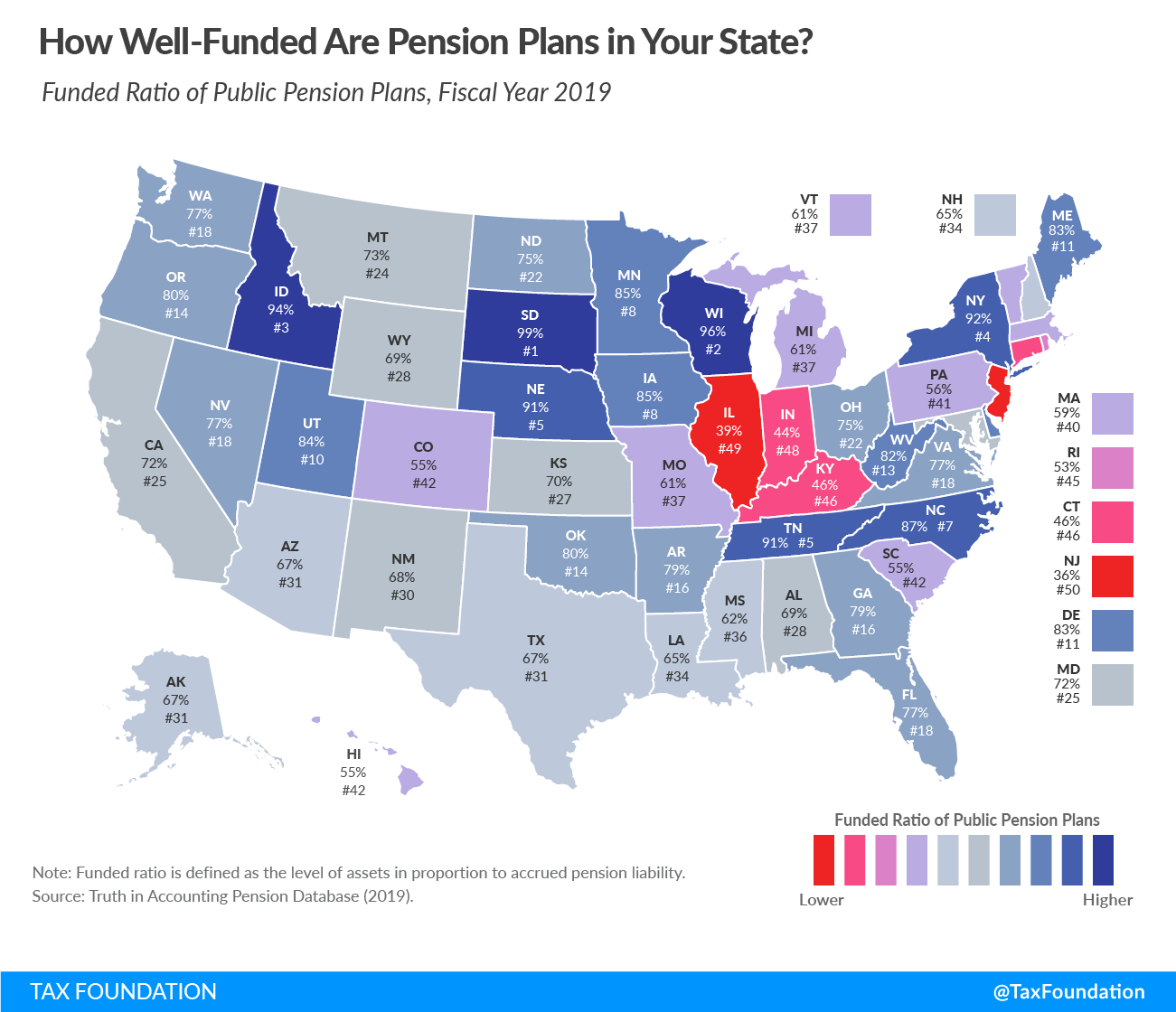How Well-Funded Are Pension Plans in Your State?
by Janelle Cammenga, Tax Foundation, June 2, 2021
Although most states are on solid financial footing following the coronavirus crisis, pension liabilities are a deep-seated problem that long predates the pandemic. The most recent data from Truth in Accounting (which analyzes government accounting data from every state) shows the strain on state retirement systems in 2019 as pension funds strive to keep pace with the benefits owed to public employees.
The following map uses FY 2019 data to show the funded ratio of public pension plans by state, calculated by measuring the market value of state pension plan assets in proportion to each state’s accrued pension liabilities. Lower funded ratios indicate when a state’s pension plan is not adequately funded, while higher funded ratios are evident in states where pension assets are keeping relatively good pace with accrued liabilities. Low funding levels are challenging not only because of the large contributions required to make up the debt, but also because they generate less in investment earnings.

As of 2019, New Jersey faced the largest deficit, with its plans only 36 percent funded. Illinois followed at 39 percent funded, with Indiana only slightly better at 44 percent.
Pension plans in South Dakota and Wisconsin were in the best shape that year, with funded ratios of 99 and 96 percent, respectively. Idaho was close behind with a 94 percent ratio.
Seventeen states saw pension plans that were less than two-thirds funded, and five states had pension plans that were less than 50 percent funded.
Pension plan structures vary from state to state, but historically, most states have provided some form of defined benefit plan that promises retirees a lifetime annuity. In recent years, some have transitioned to a defined contribution plan for new employees, with employees controlling their own accounts and employer contributions funded by the state. Other states have shifted to a hybrid plan that combines elements of a defined benefit and a defined contribution plan. The shift from defined benefit plans toward more fiscally responsible alternatives can help states better manage future liability, but many states still face years of underfunded obligations that will need to be fulfilled.
As pandemic assistance funds cannot be used to cover floundering pension plans, states will need to make wise decisions to address funding issues.
---30---
SA: Hawaii pension fund nears decade-best gain
|